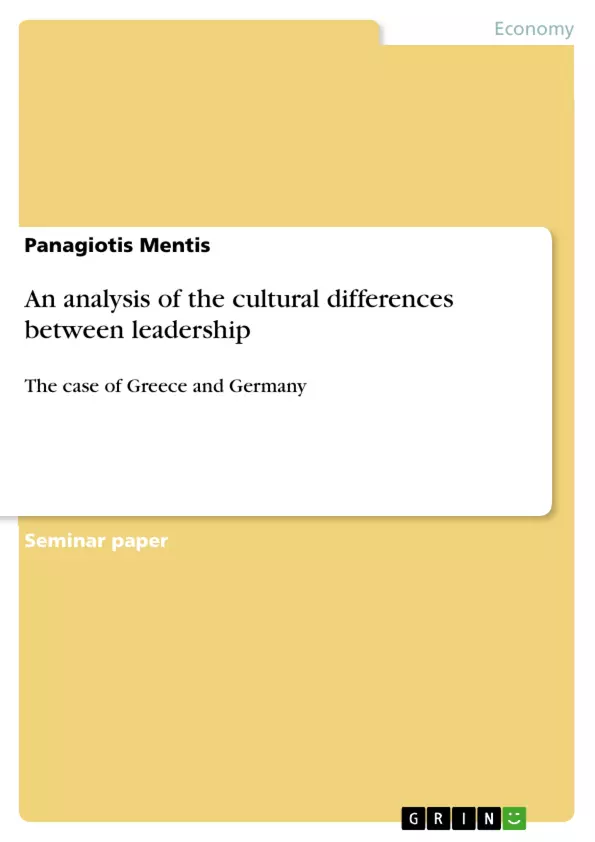This paper examines the cross-cultural differences between leadership in the case of Greece and Germany. When reviewing the literature about cultural differences and differing leadership styles, the specific attributes of both countries are brought together. The results showed that there are many ways of defining culture and leadership. As well as the cultural differences, leadership varies from one country to the next. Awareness and knowledge of a leader’s strengths is essential in leading subordinates.
To analyse the differences between leadership in the case of Greece and Germany the following questions must be addressed: What are the cultural differences between Greece and Germany? What is typical Greek and what is typical German regarding leadership? What are the big distinctions between these two forms? And is there anything that can be learned from one another? This analysis is primarily concerned with these questions.
To say that leadership varies from one country to another (Deresky, 2000) and “knowing what your personal leadership style is, the strengths and weaknesses of your preferred style, and how to deal with others whose styles may differ considerably from yours is essential to developing and sustaining successful leadership positions” (Hummel, 2007, p.25).
Inhaltsverzeichnis (Table of Contents)
- Introduction
- Cultural Differences
- Defining Leadership
- Leadership: The Case of Greece
- Leadership: The Case of Germany
- Challenges for International Business
- Conclusion/Recommendation
Zielsetzung und Themenschwerpunkte (Objectives and Key Themes)
This paper explores the differences in leadership styles between Greece and Germany. By analyzing the relevant literature on cultural differences and leadership, the study examines the unique characteristics of both countries. The analysis reveals multiple perspectives on defining culture and leadership, highlighting the variations in leadership practices across nations. The importance of understanding a leader's strengths in guiding subordinates is emphasized. The key themes of the paper include:- Cultural differences between Greece and Germany
- Leadership styles in Greece and Germany
- Distinctions between Greek and German leadership approaches
- Potential for learning from each other's leadership styles
- The importance of understanding cultural differences in leadership
Zusammenfassung der Kapitel (Chapter Summaries)
Introduction
This chapter introduces the topic of cross-cultural leadership differences, specifically focusing on Greece and Germany. It outlines the research objectives and the questions that will be addressed throughout the analysis. The chapter also emphasizes the significance of understanding leadership styles and their variations across cultures.Cultural Differences
This chapter explores the cultural differences between Greece and Germany, drawing on various theoretical frameworks and research findings. It examines how these cultural differences impact leadership styles and practices in both countries.Defining Leadership
This chapter provides a comprehensive overview of different definitions and perspectives on leadership. It explores various theories and models of leadership, highlighting their key concepts and implications for cross-cultural leadership.Leadership: The Case of Greece
This chapter delves into the specific leadership styles and practices prevalent in Greece. It analyzes the cultural influences on leadership, highlighting the key characteristics and values that shape the Greek leadership approach.Leadership: The Case of Germany
This chapter focuses on leadership in Germany, exploring the unique cultural factors that influence German leadership styles. It examines the key characteristics and values that define German leadership and contrasts them with Greek leadership practices.Challenges for International Business
This chapter explores the challenges that arise from cross-cultural leadership differences in international business contexts. It examines the potential conflicts and misunderstandings that can occur when leaders from different cultures interact and work together.- Quote paper
- Panagiotis Mentis (Author), 2012, An analysis of the cultural differences between leadership, Munich, GRIN Verlag, https://www.grin.com/document/213600



